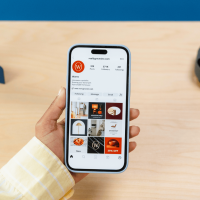Sleepless nights have driven millions to their app stores seeking digital relief. Modern insomnia apps now offer far more than white noise, incorporating evidence-based treatments and tools like a sleep calculator that determines optimal bedtimes based on sleep cycles.
These applications have evolved from simple trackers into comprehensive therapeutic platforms implementing cognitive behavioral techniques previously available only through specialists.
But beneath the polished interfaces lies a crucial question: can smartphone interventions truly address the complex neurobiological and psychological mechanisms of chronic insomnia?

The Therapeutic Foundation of Sleep Apps
Effective insomnia apps don’t simply repackage sleep hygiene lists—they translate evidence-based clinical approaches into digital formats. The most successful applications implement principles from Cognitive Behavioral Therapy for Insomnia (CBT-I), the gold-standard non-pharmacological treatment with decades of clinical validation.
Digital Implementation of CBT-I Components
The core components of CBT-I translate into digital formats through several structured intervention approaches:
- Sleep restriction therapy: Apps calculate optimal time-in-bed windows based on actual sleep efficiency, gradually expanding as sleep consolidates
- Stimulus control techniques: Digital guidance helps users establish bedroom-sleep associations through consistent rule implementation
- Cognitive restructuring: Interactive modules identify and challenge unhelpful beliefs about sleep
- Relaxation training: Guided audio sessions teach progressive muscle relaxation and breathing techniques
- Sleep hygiene education: Contextual information delivered when relevant rather than as generic advice
Research examining digital CBT-I implementations shows effectiveness approaching that of in-person therapy for many users—particularly those with mild to moderate insomnia symptoms without complex comorbidities.
Personalization Mechanisms in Insomnia Apps
Generic approaches to insomnia often fail because sleep problems manifest differently across individuals. Advanced sleep applications employ sophisticated personalization algorithms that adapt interventions based on user data patterns, creating tailored approaches rather than one-size-fits-all solutions.
This personalization operates through several mechanisms:
- Initial assessment profiling to identify primary insomnia phenotype
- Ongoing sleep pattern analysis to adjust interventions
- Response monitoring with intervention modification
- Dynamic difficulty adjustment for sleep restriction protocols
- Personalized scheduling aligned with chronotype
The personalization engine’s sophistication often determines an application’s effectiveness, with more advanced systems showing significantly better outcomes than static implementation approaches.
Real-Time Intervention Capabilities
Beyond scheduled therapeutic components, cutting-edge insomnia applications deliver contextual interventions during critical moments in the sleep process. These just-in-time adaptive interventions detect sleep disruption events and deploy appropriate responses when most needed.
Critical Intervention Points
Applications monitor for several key moments requiring specific interventions:
- Pre-bed anxiety detection:
- Physiological arousal signs trigger relaxation protocols
- Racing thoughts prompt cognitive defusion techniques
- Physical tension initiates targeted relaxation guidance
- Middle-night awakening responses:
- Awakening duration monitoring activates appropriate protocols
- Activity detection prompts return-to-bed guidance
- Cognitive content assessment guides thought management techniques
These real-time capabilities extend the application’s function beyond simply digitizing traditional therapy components into creating responsive systems that mirror the adaptability of skilled therapists.
Efficacy Evidence: What the Research Shows
The scientific examination of sleep application effectiveness reveals a complex picture of varying effectiveness across different app designs and user populations.
Comparative Effectiveness Research
Studies examining insomnia app outcomes show:
- Therapist-supported apps: Effectiveness approaching in-person CBT-I for uncomplicated insomnia
- Fully automated interventions: Moderate effectiveness with high completion variability
- Sleep tracking only: Minimal therapeutic benefit without behavioral components
- Mixed-modality approaches: Enhanced outcomes through complementary intervention combinations
The current research consensus indicates that properly designed applications implementing full CBT-I protocols can produce clinically significant improvements in sleep onset latency, total sleep time, and sleep efficiency. The effect sizes typically reach 50-70% of those seen in therapist-delivered interventions—a substantial impact for fully automated digital interventions.
Technological Features That Drive Outcomes
Not all insomnia applications deliver equal results. Research identifies specific technical implementations that enhance therapeutic effectiveness.
Engagement-Driving Mechanisms
The most successful applications employ several techniques to maintain therapeutic engagement:
- Microinteraction optimization: Brief, frequent interactions rather than lengthy sessions
- Behavioral economics principles: Strategic incentive structures and gamification
- Narrative frameworks: Therapeutic content delivered through coherent storylines
- Progress visualization: Clear representation of improvement metrics
- Appropriately spaced practice: Timed intervention delivery matched to learning principles
These engagement features often determine therapeutic outcomes more strongly than the core therapeutic content itself, as even the most effective interventions fail if users abandon the application prematurely.
Integration with Traditional Care Pathways
While some individuals use sleep applications as standalone interventions, many implementations now focus on integration with traditional healthcare delivery.
Integration Models
Several approaches to healthcare integration have emerged:
- Stepped care positioning: Apps serve as first-line interventions before escalating to in-person care
- Therapist-augmented delivery: Digital tools extend provider reach between sessions
- Post-treatment maintenance: Applications sustain gains following formal therapy completion
- Assessment and triage: Digital screening determines the appropriate level of care
This integration allows sleep applications to function as extensions of the healthcare system rather than separate consumer products, potentially addressing provider shortages in sleep medicine.
Implementation Challenges and Limitations
Despite their promise, insomnia applications face several implementation challenges that limit their real-world effectiveness.
Barriers to Optimal Implementation
Key limitations in current-generation applications include:
- Sensor accuracy limitations: Consumer devices poorly detect certain sleep parameters
- Algorithmic personalization boundaries: Difficulty adapting to atypical presentation patterns
- Engagement sustainability challenges: High abandonment rates after initial interest
- Clinical complexity navigation: Limited capability handling comorbid conditions
- Digital divide issues: Accessibility barriers for certain demographic groups
These challenges help explain the disparity between controlled research outcomes and real-world effectiveness, as study participants typically receive support and encouragement absent in normal consumer usage.
The Future of Digital Insomnia Interventions
While current applications demonstrate meaningful benefits, several emerging technologies promise to further enhance digital insomnia intervention effectiveness.
Emerging Enhancement Approaches
Next-generation technologies likely to improve outcomes include:
- Advanced sensing integration: Better sleep detection through multi-sensor fusion
- Circadian alignment optimization: Precise timing based on individual rhythm detection
- Contextual awareness expansion: Environmental factor integration into intervention designs
- Multi-component sleep health systems: Integrated approaches addressing related health factors
- Chronobiological intervention precision: Phase-appropriate therapy delivery
These advancements may help close the remaining gap between digital and in-person therapeutic outcomes for many insomnia sufferers.
Conclusion
Sleep apps offer genuine help for insomnia sufferers, particularly those implementing complete CBT-I protocols with strong personalization capabilities. Their greatest value lies not in replacing traditional care but in reaching the substantial population that would otherwise receive no treatment at all.
With appropriate expectations and engagement, these digital interventions provide a viable pathway to improved sleep for millions navigating insomnia without clinical support.

Founder Dinis Guarda
IntelligentHQ Your New Business Network.
IntelligentHQ is a Business network and an expert source for finance, capital markets and intelligence for thousands of global business professionals, startups, and companies.
We exist at the point of intersection between technology, social media, finance and innovation.
IntelligentHQ leverages innovation and scale of social digital technology, analytics, news, and distribution to create an unparalleled, full digital medium and social business networks spectrum.
IntelligentHQ is working hard, to become a trusted, and indispensable source of business news and analytics, within financial services and its associated supply chains and ecosystems









